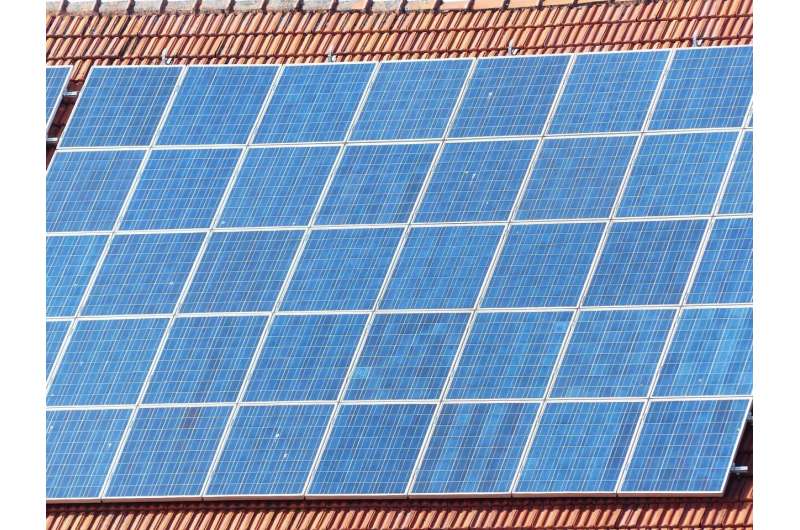This article has been reviewed according to Science X's editorial process and policies. Editors have highlighted the following attributes while ensuring the content's credibility:
fact-checked
trusted source
proofread
SolarEV cities: Pathways to decarbonize developing cities equitably, affordably

Sitting on the northwest coast of the island of Java, Jakarta is home to some 10.5 million people. As the economic, cultural and political center of Indonesia, the city will undergo significant transformations as the country seeks to become a developed nation by 2045. Such development will need to occur hand-in-hand with rapid decarbonization, to ensure a sustainable and equitable future.
A research group has recently crunched the numbers on implementing an energy system employing solar photovoltaics (PV) on rooftops combined with electric vehicles (EV) in Jakarta, finding a wealth of economical and environmental benefits. In the analysis, EVs were used as batteries for the variable PV generation.
"Through the widespread usage of rooftop PVs combined with EVs as batteries, there will likely be a 75–76% reduction in CO2 emissions, and the PV/EV system can provide electricity to the city at a price 33–34% cheaper than Jakarta's existing energy system in 2030," said Professor Takuro Kobashi, who led the research.
The group discovered that solar panels already provide a cost-effective means to generate electricity within the city. These savings, which as of 2019 stood at 3–4%, will rise to roughly 8–15% by 2030. When factoring in the use of EVs as a battery for PVs (e.g., Vehicle-to-Home or Vehicle-to-Building systems), where PV electricity stored in EV batteries can power cities as well, the rooftop system could meet 75–76% of Jakarta's electricity demand with clean and affordable electricity.
Kobashi has previously investigated the rooftop PV plus EV system, what he dubs "SolarEV Cities," on Japanese cities. But this is the first time such an assessment has been applied to a developing city. He teamed up with Indonesian researchers to apply a techno-economic analysis of Jakarta, drawing comparisons with Kyoto.
Unlike Kyoto, Jakarta's tropical climate renders little-to-no heating demand throughout the year. Rather, year-round cooling is needed, something that positively correlates with PV generation. Therefore, establishing a SolarEV City in Jakarta would result in a 9% increase in decarbonization than if implemented in Kyoto.
"We also found that rooftop angles and orientations are less important given the higher sun altitude angle in Jakarta than Kyoto," added Kobashi.
Kobashi claims that implementing a SolarEV City is a no-brainer when it comes to generating a strategy for the rapid growth and decarbonization of Indonesia, and other low-latitude developing cities.
More information: Retno Gumilang Dewi et al, Equitable, affordable, and deep decarbonization pathways for low-latitude developing cities by rooftop photovoltaics integrated with electric vehicles, Applied Energy (2022). DOI: 10.1016/j.apenergy.2022.120507


















